The footprint of cities in the environment
2005/11/01 Belaustegi Irazabal, Ainara - Elhuyar Zientziaren Komunikazioa Iturria: Elhuyar aldizkaria
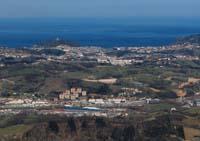
The concept of ecological footprint is used precisely to refer to the impact of the city on the environment. The ecological footprint is the productive land surface a city needs to maintain its population. This fertile surface provides the city with the resources necessary to maintain its population, on the one hand, and the environment in which the spills and waste it generates are absorbed.
The ecological footprint of today's cities is enormous. London's ecological footprint in the UK, for example, is 120 times the surface of the city itself. And the more the city grows, the greater its footprint. But look, not only demographic growth, but also other factors that intervene in the ecological footprint of cities. And among them, perhaps the local economy is the most influential, since urban infrastructure and consumption profile depend on it. Look, if not, at the difference between industrialized cities and developing cities. An American city of 650 thousand inhabitants needs 30,000 square kilometers of land, while in India, a city of the same number of inhabitants, needs 2,800 square kilometers. It is very understandable, in industrialized cities per capita consumption is much higher and therefore the amount of waste they generate. In addition, the management plan for rich cities is much better.
However, in all cities of the world a common phenomenon is occurring. That is, the infrastructure and management of cities are much slower than population growth, with the consequent increase in environmental impact. Examples of this are the problems generated by poor management of water and waste, among others.
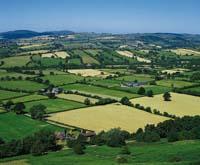
Depleting water
Urbanization can significantly increase the use of fresh water ( per capita). Imagine that 60% of drinking water goes to cities (almost half to water the crops consumed by citizens, a third for industry and the other for consumption and cleaning).
One of the main causes of large water consumption in cities is water loss along the way. Most are lost due to the scarce agricultural irrigation systems, but the leaks and illegal links in the pipes of the water systems of the cities also cause significant losses; in many cities of the underdeveloped countries, between 40-60% of drinking water is lost and in the industrialized countries one quarter of drinking water is lost. However, in some cities of the latter there has been a renewal of distribution networks that has allowed to reduce water losses to 10%, as is the case of Vitoria-Gasteiz.
According to the London organization Water Aid, the largest cities in the world are depleting water supplies. Some cities, including New Delhi, Santiago and Mexico City, pump water into increasingly remote areas. Meanwhile, cities in China, South America and South Asia are descending more than a meter a year.

In the last 70 years the world population has tripled, while water use has multiplied by six. According to the World Meteorological Organization, water use by 2050 will triple. But water is a limited resource and if not cared for, lack of water will be a major problem in the future. This shortage will quickly affect North Africa and West Asia.
Half landfill
The growth of cities is accompanied by an increase in resource consumption and consequently waste production. The problem is that it produces many more waste than the city can handle.
Solid waste is often deposited in periurban landfills. In this way, many rural lands become urban waste deposits. And these landfills, if not managed properly, can contaminate water resources and the entire ecosystem.
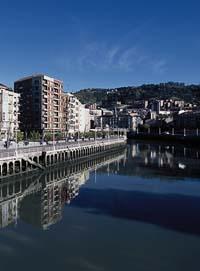
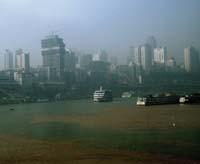
However, we are increasingly aware of the environmental impact of solid waste, recycling is becoming stronger. Yes, at least in industrialized cities. Cans, bottles, plastic and paper are currently recycled in many cities. The same is not true in developing cities. These do not have such resources. However, the poverty of the area has caused many people to collect trash to live. Bangalo, one of India's largest cities, produces around 30,000 tons of garbage a day. Of these, about 27,000 tons are recycled or reused by citizens. Thus, the city must undo 3,000 tons of garbage a day.
In addition to producing solid waste, cities are primarily responsible for emissions of gases into the atmosphere. These gases are mainly due to the cars and the big electrical needs of the city. In addition, an estimated 60% increase in gas emissions in the next quarter of a century. These gases, and especially carbon dioxide, contribute to the greenhouse effect. According to the 1995 report by the intergovernmental panel of climate change experts, global temperature will rise between 1 and 3.5 degrees Celsius in the next century.
Nor can we forget urban wastewater. Globally, two-thirds of the fecal water in urban areas is poured into lakes, rivers and coasts without any treatment, causing heavy pollution in aquatic ecosystems. Underdeveloped countries are the worst, as few of them have an adequate sewage system. In Asia, for example, about 35% of wastewater is treated, while in South America and the Caribbean only about 14% are treated.
Need for a sustainable city
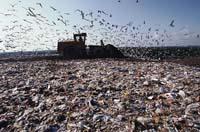
What and how citizens produce and consume… there is the key. Human beings are engaged in overexploitation of natural resources and global environmental pollution. But if it continues as it has until now, the environment will stop the human being, since natural resources are limited and climate change can cause great damage.
Green city, eco-city or sustainable city. Call us as you like. A good transport system, recycling, waste reduction and the development of cities that favour renewable energy is absolutely necessary. Today there are cities of this type in the world, perhaps one of the most outstanding is Freiburg (Germany). Since the early 1970s, measures for sustainable development have been taken there. Between 1970 and 1973, bike lanes were built, the tram network was improved and the entire urban area was pedestrianized. In 1991 a special voucher was created to use all urban and urban public transport at a fixed price.
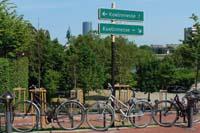
Bicycles are the most important means of transport in Freiburg. From 1970 to the present, 29 km of bidegorri have gone to have 500 kilometers of bidegorri. On the other hand, Freiburg is known as the German solar city. 5% of the electricity used today in the city comes from renewable sources and, if so, will meet the goal of reaching 10% in 2010. For this, of course, the local government grants subsidies in exchange for installing solar panels. As for waste, Freiburg also has adequate infrastructure for recycling.
But don't think that the only such city in the world is Freiburg. Other cities such as Heidelberg, Oslo and Stockholm have taken important steps in respecting the environment. Other cities have begun to take small steps.
However, most cities remain far from sustainable development. Therefore, we have a long way to go.






